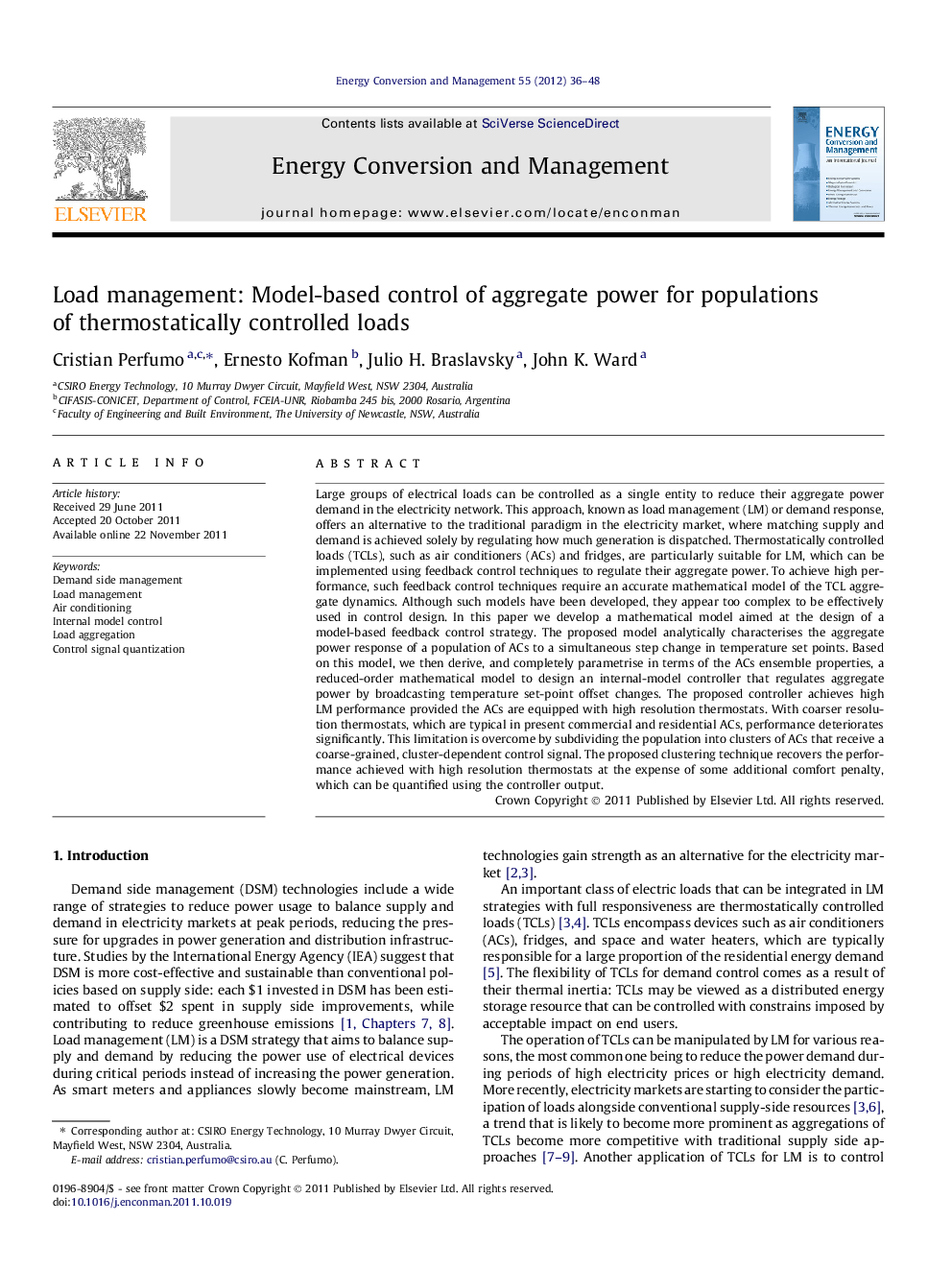| کد مقاله | کد نشریه | سال انتشار | مقاله انگلیسی | نسخه تمام متن |
|---|---|---|---|---|
| 764419 | 1462907 | 2012 | 13 صفحه PDF | دانلود رایگان |

Large groups of electrical loads can be controlled as a single entity to reduce their aggregate power demand in the electricity network. This approach, known as load management (LM) or demand response, offers an alternative to the traditional paradigm in the electricity market, where matching supply and demand is achieved solely by regulating how much generation is dispatched. Thermostatically controlled loads (TCLs), such as air conditioners (ACs) and fridges, are particularly suitable for LM, which can be implemented using feedback control techniques to regulate their aggregate power. To achieve high performance, such feedback control techniques require an accurate mathematical model of the TCL aggregate dynamics. Although such models have been developed, they appear too complex to be effectively used in control design. In this paper we develop a mathematical model aimed at the design of a model-based feedback control strategy. The proposed model analytically characterises the aggregate power response of a population of ACs to a simultaneous step change in temperature set points. Based on this model, we then derive, and completely parametrise in terms of the ACs ensemble properties, a reduced-order mathematical model to design an internal-model controller that regulates aggregate power by broadcasting temperature set-point offset changes. The proposed controller achieves high LM performance provided the ACs are equipped with high resolution thermostats. With coarser resolution thermostats, which are typical in present commercial and residential ACs, performance deteriorates significantly. This limitation is overcome by subdividing the population into clusters of ACs that receive a coarse-grained, cluster-dependent control signal. The proposed clustering technique recovers the performance achieved with high resolution thermostats at the expense of some additional comfort penalty, which can be quantified using the controller output.
► Characterisation of power response of a population of air conditioners.
► Implementation of demand side management on a group of air conditioners.
► Design of a controller for the power output of a group of air conditioners.
► Quantification of comfort impact of demand side management.
Journal: Energy Conversion and Management - Volume 55, March 2012, Pages 36–48